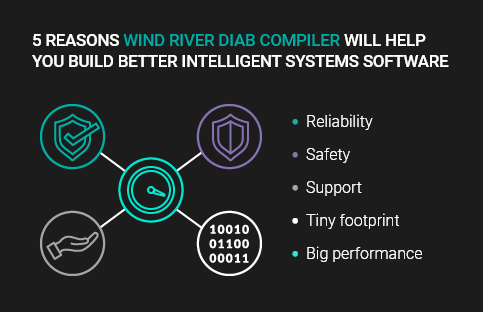What Is a Software Compiler?

Developers use human-readable languages that software compilers translate into machine code the computer processor can execute.
A software compiler is a program that translates source code written in a high-level programming language into machine code that can be executed by a computer. This process of translation is known as compilation.
The source code is typically written by a software developer in a programming language such as C++, Python, or Java. These languages are designed to be human readable, making it easier for developers to write and understand. However, computers can only execute machine code, which is a series of binary instructions that the processor can understand.
The compiler converts the source code into machine code by analyzing it and generating the appropriate binary instructions. This process is done in several stages, including lexical analysis, syntax analysis, semantic analysis, and code generation.
The lexical analysis stage scans the source code for tokens, which are basic elements such as keywords, operators, and identifiers. The syntax analysis stage checks that the tokens are arranged in a valid way according to the language’s grammar. The semantic analysis stage checks for any semantic errors, such as using a variable that has not been declared.
Once the source code has been analyzed and any errors have been identified and reported, the code generation stage begins. This stage creates the machine code that can be executed by the computer. The machine code is usually optimized for performance, to make sure that the program runs as quickly and efficiently as possible.
The resulting machine code is saved as an executable file, which can be run on the target computer or device. The software developer can also use a debugger to step through the code, check variables and memory, and find bugs.
What Are the Major Toolchain Components for a Compiler?
The set of tools that compilers use to translate source code is called the toolchain. Following are the major toolchain components for a compiler:
- Driver: An intelligent wrapper program invokes the compiler, assembler, and linker, using a single application.
- Assembler: A macro assembler, invoked automatically by the driver program or acting as a complete stand-alone assembler, generates object modules. It supports conditional macros and an unlimited number of symbols and provides information for source-level debugging of assembly programs.
- Compiler: A cross-compiler compatible with ANSI/ISO C/C++ uses LLVM/Clang in 7.0.x and EDG front end in 5.x versions. It supports ANSI C89, C99, C++03, C++14, and C++17.
- Linker: The linker provides precise control of allocation, placement, and alignment of code and data; object modules linked into absolute or relocatable modules; and stack usage estimates.
- Libraries: These are standard runtime functions, precompiled code that helps developers create applications. A variety of the many fast, efficient libraries available include the complete C++ library and the Standard Template Library (STL), math libraries (including IEEE-754 appendix functions), and source code libraries.
- Link-time optimization (LTO): This is a method for achieving better runtime performance through whole-program analysis and cross-module optimization.
- GNU Arm® linker support: Two equivalent options exist to instruct the driver to call the GNU linker for greater GNU compatibility.
- Undefined Behavior Sanitizer (UBSan): This compiler option modifies the program at compilation time to catch various kinds of undefined behavior that can arise during program execution.
- Instruction set simulator: This simulates the core instructions of the target processor.
- Eclipse CDT plugin: An open source project, it is a family of Eclipse plugins and tools for multi-platform embedded development based on GNU toolchains.
How Can Wind River Help?

Wind River Diab Compiler
Wind River® Diab Compiler, the industry-leading compiler, helps boost application performance; reduce memory footprint; and produce high-quality, standards-compliant object code for embedded systems. Wind River has a long history of providing software and tools for safety-critical applications requiring certification in the automotive, medical, avionics, and industrial markets. Its award-winning global support organization draws on decades of compiler experience and hundreds of millions of successfully deployed devices.
In the embedded market, there is tremendous pressure to pack performance and features into small-memory devices that consume less power. To help meet these demands, Diab Compiler offers hundreds of optimization options, such as global, local, processor-specific, profile-driven, and whole-program optimization for fine-tuning software for performance, footprint, or both. Standard global options settings or customized compiler options offer best results for application code.
With these performance gains, developers can build devices that use less memory and require lower-power processors, reducing project hardware costs. Each release of Diab Compiler includes new optimizations to unlock further performance and code density improvements.
Key Features
Diab Compiler includes a host of features that help developers build better intelligent systems software, including:
- Selectable speed/size optimization: Users can choose whether to optimize for speed or code size.
- Small data area optimizer: Optional predefined sections can improve reference efficiency for widely used static or public variables.
- Code factor optimizer: Shared common code sequences can reduce code size.
- Reverse in-lining: The ability to factor repeated code sequences into new functions can optimize code.
- Whole-program optimization: The compiler can improve execution efficiency by optimizing calls between functions in different source files.
- Link time optimization groups: Safety-critical code can be isolated from non–safety-critical code.
- Easy interrupt handling: Interrupt keywords and pragmas make it easy to handle interrupt processing for embedded systems.
- Position-independent code and data: Code and data can be loaded at any address.
- Control of structure formats: This capability can help optimize performance by reducing footprint.
- Extensive link command language for memory mapping: The language allows fine-grained control for optimizing code and data in memory.
- Support for multiple object module formats: The compiler supports ELF, IEEE-695, and S-Records and can generate object modules in multiple formats.